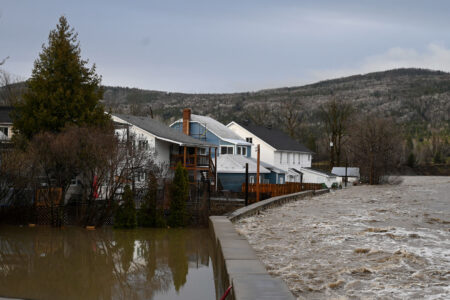
The B.C. Energy Step Code is one of the latest examples of progressive, performance-based building energy codes in North America. Performance-based codes are different from the traditional prescriptive regulations in that, rather than prescribing minimum requirements for individual components and systems (R-value of wall assemblies, efficiency of boilers, etc.), they assess and regulate the whole building as a system, setting out performance requirements for the building as a whole.
In December 2019 came a revision that dealt a major blow to the cause of energy efficiency in B.C. The Energy Step Code fully embraced the reference building approach (RBA) for small residential buildings. This approach was a small part of the step code from its inception, but its expansion in 2019 drastically undermined the step code’s effectiveness in delivering high-efficiency housing and facilitating the province’s ambitious plan to mandate net zero energy ready construction by 2032.
The various shortcomings of the RBA have been extensively discussed in policy papers, including a recent Policy Options article, webinars and reports. Most importantly, the RBA creates a sliding scale that entails a different performance baseline, and therefore a different efficiency target, for each single building. The latest proposed changes to the National Building Code of Canada also rely on this problematic approach.
Given the serious flaws of this approach, the reasons for its perseverance and resurgence in the Canadian regulatory landscape merit attention. It is noteworthy that the B.C. government has yet to provide specific reasons for the introduction of the RBA to the B.C. Building Code or to address the increasing calls from various stakeholders to rescind that misstep.
In the RBA, the energy performance of a building is assessed not based on concrete absolute metrics (e.g., units of annual energy demand per unit floor area, kWh/m2/a), but in comparison with a hypothetical reference, the reference building. This reference building is a hypothetical building of the same shape, size and orientation as the building under assessment, with envelope assemblies (walls, windows, roofs, etc.) and systems (boilers, water heaters, air conditioners, etc.) that meet a set of prescriptive requirements (R-value, efficiency, etc.).
Essentially, the approach compares a given building with the case where the building would have been built to a set of prescriptive requirements. Efficiency targets are then expressed in terms of “percentage better than the reference building.” In other words, 20 per cent better or 40 per cent better, and so on.
While the RBA seems to be riding its historical momentum, starting with the seminal ASHRAE Standard 90 and continuing through the EnerGuide rating system in Canada, ambiguous policy objectives are also to blame for more recent resorts to this dated approach. For instance, the Energy Step Code was designed to mandate a 20 per cent efficiency improvement by 2022 and a 40 per cent improvement by 2027, in transition to an 80 per cent higher efficiency by 2032, deemed net zero energy ready. What is missing from those objective statements is the baseline for the relative improvement: 20 per cent, 40 per cent or 80 per cent better than what?
The tacit assumption that opened the door to the RBA was that improvements are to be gained relative to buildings built prior to the Energy Step Code (2017). But instead of establishing a concrete baseline, based on the historical energy performance data, the RBA was adopted. In the “sliding scale” created by the RBA, depending on particularities of design (especially the form factor), even an 80 per cent improvement over the reference house might not be remotely sufficient for net zero energy ready performance.
For instance, if the reference building has an annual thermal energy demand of 80 kWh/m2/a, a 50 per cent better house (40 kWh/m2/a) would still require far more than 15 kWh/m2/a, the threshold emerging as a global consensus for net zero energy ready performance. On the other hand, a reference building with 35 kWh/m2/a thermal energy demand means a 50 per cent better house is almost at the net zero energy ready threshold.
The way things currently are, there will be little surprise if the overall energy performance of new housing in B.C. did not improve by much over the next few years, even under the upcoming B.C. Building Code 2022, with its stated objective of “20 per cent more energy efficient” buildings.
But it does not have to be like that. For instance, the European Union’s Energy Performance of Buildings Directive (EPBD) also mandates member states to define energy efficiency improvement targets, in relative terms. However, the EPBD also requires the establishment of absolute baselines, based on each nation’s existing building stock. Therefore, the relative performance improvement targets are directly translatable into concrete absolute numbers, in terms of energy demand per unit floor area. The development of such statistical baselines (which are coincidentally also called “reference buildings”) has been the subject of a growing body of scientific literature.
In Canada, energy performance baselines can readily be established. For instance, Natural Resources Canada (NRCan) collects energy modelling data on thousands of housing projects ever year through its EnerGuide rating system, which is also widely used in efficiency programs across the country, including the Energy Step Code in B.C.
The pioneering analysis that exposed the fundamental shortcomings of the RBA in the Step Code was based on a small subset of that data. NRCan’s massive database can be used to establish historical and current energy performance baselines for various building archetypes and regions. Energy consumption data from local utilities can then be used to verify and further refine those baselines. The energy policy objective statements can be revised to include a clear, specific baseline for the improvement targets. Those relative efficiency targets can then be translated to concrete, measurable outcomes.
Transparency and free access to information are part of the proposed solution. For the necessary transition of our building sector to net zero energy, it is crucial that there be access to information on the current state of energy efficiency in our buildings.
There is no justification for this crucial information being secretively and possessively guarded in the vaults of government agencies and utilities, and there is no reason for the release of that data to take longer than a few months. Of course, a publicly available database would have to be continuously updated and improved. Since the data is to be aggregated based on archetype, location and climate zone, there should be no privacy concerns.
Vague policy objectives lead to policies whose effectiveness is difficult to assess. In the case of energy efficiency in buildings, more clarity on the improvement targets stated in Canada’s federal and provincial climate action plans is needed. All levels of government should work together to develop clear, precise, measurable objectives. Otherwise, ineffective policies will continue to waste our limited time to transform the building sector.










